Visiting the Jacques-Louis David exhibition at the Louvre the other day, I stumbled upon his preparatory sketches from 1794, commissioned by the Convention, to design new outfits for every revolutionary office, and even a “national costume” for all French citizens.
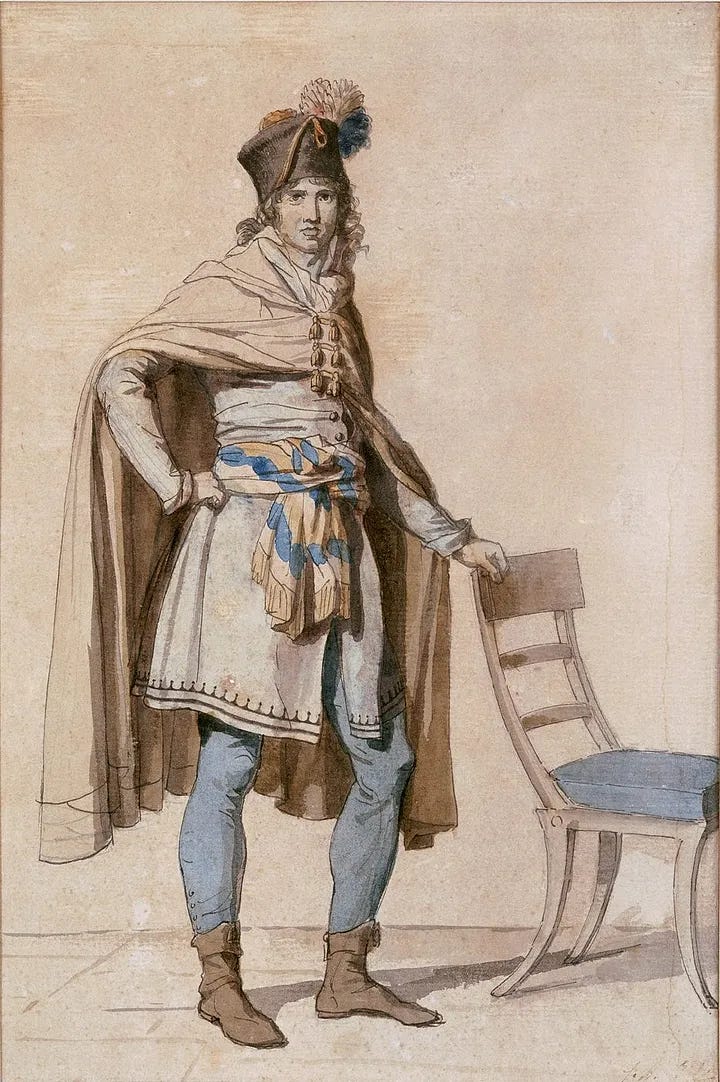
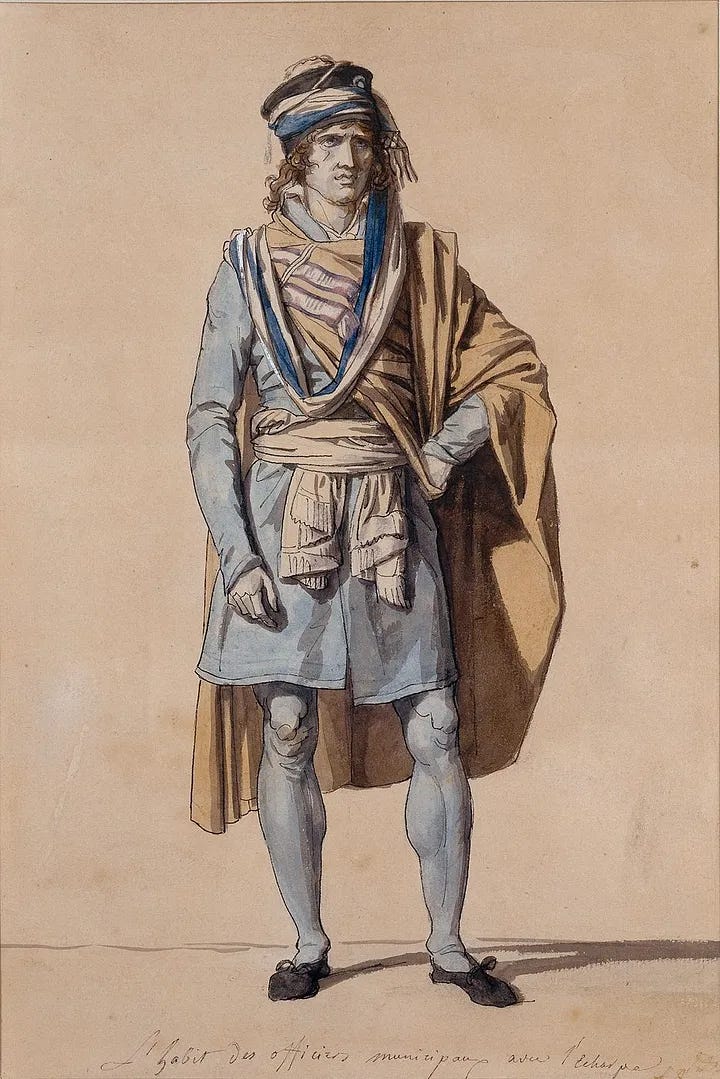
I had two thoughts.
Why don’t we design costumes for each function anymore? Under the Empire, State Councillors had incredible outfits. So did prefects and mayors. Today, it’s a miracle if you see a prefect dust off his dull black uniform for a patriotic ceremony. The reign of the suit and tie is, frankly, boring.

The Revolutionaries were completely insane. Everyone knows the Revolution was a chaotic and violent time, but it’s hard to imagine today the collective hallucination it must have taken to design a costume inspired by ancient Phrygia and decree that every citizen should wear it daily. In a way, I admire their level of enthusiasm and imagination. The modern far left, by comparison, is terminally dull. Who today proposes to redesign the entire French wardrobe? What a lack of imagination.

This madness wasn’t limited to the Revolutionaries. It was the spirit of the whole age, from before the Revolution to the end of the Empire. Grimm wrote in his Correspondance Littéraire as early as 1763:
“For a few years now, people have been rediscovering ancient ornaments and forms; taste has improved considerably, and the fashion has become so general that everything today is done à la grecque. The exterior and interior decoration of buildings, furniture, fabrics, jewelry of all kinds—everything in Paris is Greek-style. This taste has spread from architecture to the fashion shops; our ladies wear their hair à la grecque; our dandies would feel dishonored carrying a box that wasn’t Greek-style. The excess is ridiculous, of course, but who cares? If abuse is inevitable, better to overdo a good thing than a bad one. If this Greek taste ever becomes the mania of our hairdressers and cooks (for such great Greeks as we must surely be powdered and fed à la grecque), so be it.”
Today, the word neoclassicism sounds like something stiff and academic. But in truth, it was the nerdiest episode in all of history. For about thirty years, Europe lived through a collective obsession with Antiquity that far outstripped, in both intensity and weirdness, anything you’ll find today in fantasy or sci-fi fandoms.
Take Star Wars fans. The most devoted might dress up as Jedi for a convention or a movie night, but they don’t go about their daily lives that way. The fans of Antiquity in the 1780s and 1790s—that is, basically everyone—actually walked around dressed like ancient Greeks or Romans. Men wore “Titus” haircuts; women wore Greek dresses. And these dresses had nothing in common with the fashion that came before: big, layered, ribboned, opaque gowns. The new ones were transparent, minimalist, and draped like statues. It’s as if, overnight, every woman today started wearing dresses straight out of Game of Thrones.
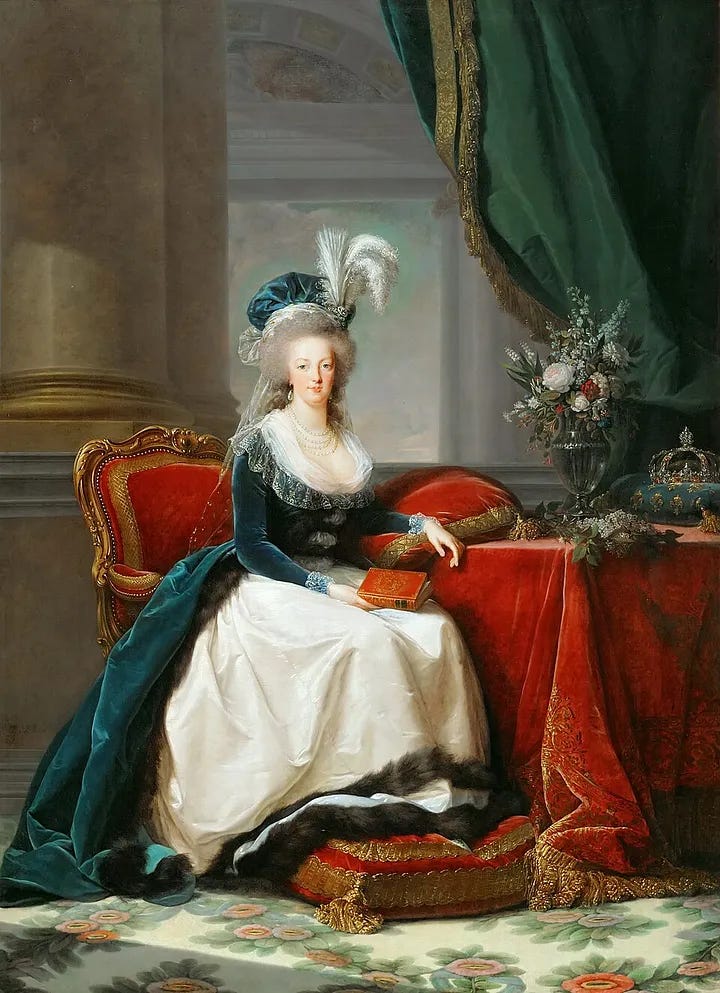
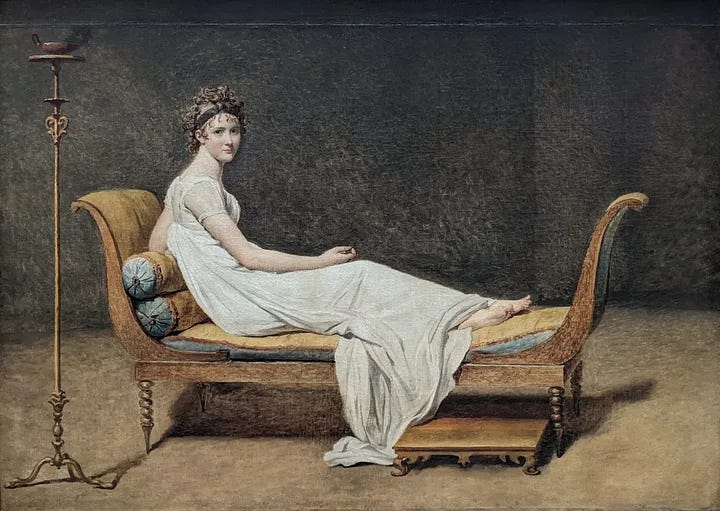
The obsession even extended to names. Today, you might find the odd baby called Anakin or Daenerys, but that’s rare and usually mocked. During the Revolution, though, Achilles, Gracchus, Chloris, and Proserpine popped up everywhere, even among the educated elite. And when people had themselves sculpted in bust form, they posed half-naked, like antique heroes.
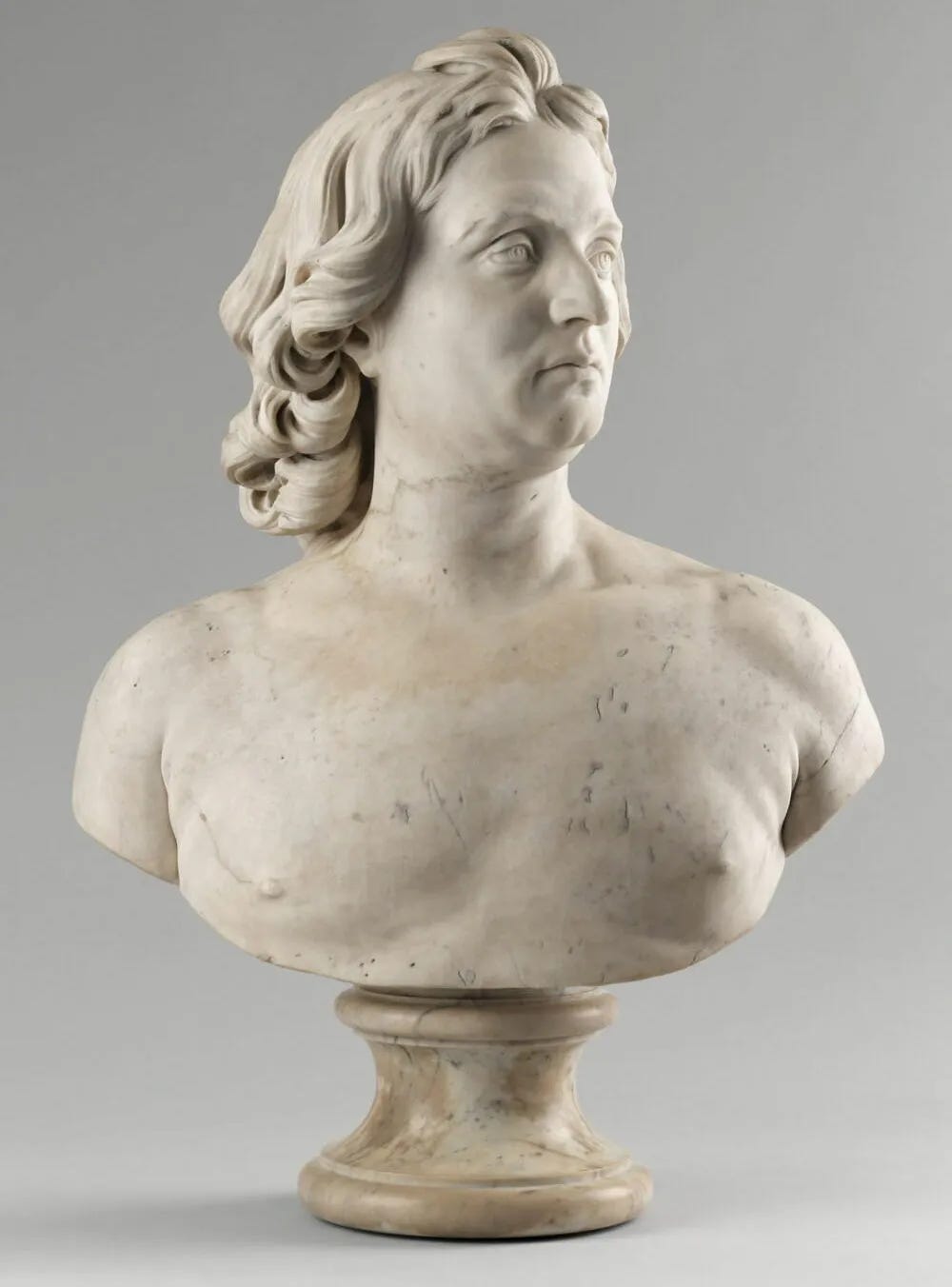
People decorated their homes like Pompeii, which had just been rediscovered. Decorative arts of all kinds took their inspiration from Antiquity. Painters like Vigée-Le Brun hosted “Greek suppers,” where guests were required to show up dressed as ancient Greeks. And it didn’t stop at art: the entire institutional framework of society was remade in classical style, with consuls, tribunes, legions, eagles. Society itself was cosplaying as an ancient city-state.
Of course, classical references weren’t new. Since the Renaissance, even before that, Antiquity had irrigated European culture. But around the turn of the 18th century, something unique happened: the taste for the ancient world reached an absolutely wild degree. I can’t think of any other society that, in just a few years, decided to change its décor, its clothes, its names, its ways of being, even its institutions, to adopt those of what was basically a fantasy universe. Because people back then weren’t aiming for historical accuracy; if I’m drawing comparisons with pop culture and fantasy here, it’s because the 18th century’s love of Antiquity came from fiction, like The Travels of Young Anacharsis in Greece, a wildly popular imagined travelogue published in 1788 by Jean-Jacques Barthélemy.
Do we have any true equivalent today? I don’t think so. Some of America’s tech-right types are obsessed with The Lord of the Rings, but it only shows in the names of their companies: Anduril, Palantir, Mithril Capital, Erebor. We haven’t yet seen Palmer Luckey dressing as a hobbit, though he’s one of Silicon Valley’s more eccentric figures. So I conclude that our society isn’t very fun: we’re more constrained in how we express our passions than people in the 18th century were; we dare less to change our surroundings; in a sense, we’re older than they were.
Spring–Summer 1794 collection by Jacques-Louis David, a.k.a. the “Revolution” line.

